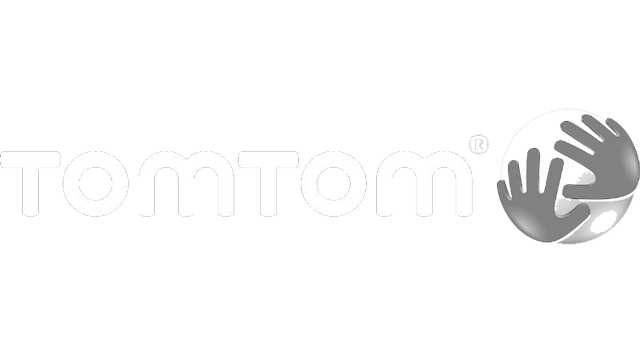We specialise in serving headquarters of global brands, helping them cut complexity costs in strategy execution across markets and fulfil their corporate role as scale economisers and advantage accelerators. Leverage our consulting expertise, technology solutions and remote talent resources to create organisational simplicity, scalability and efficiency in multi-market market operations.
Transforming global brand marketing, creative and eCommerce operations into a competitive advantage
 (EMEA) 47 markets
(EMEA) 47 markets
 (EMEA) 14 markets
(EMEA) 14 markets
 (WHQ)
(WHQ)
The Age of Complexity, Individual and Organisational Complexity Costs
The explosive development of the internet and related information and communication technologies fuels the growing speed and complexity of developments in society and business. People find it ever more difficult to cope with all information they receive, constant changes in the organisations and technologies they use, and increasingly complex and unpredictable number of interactions required to complete their business or private tasks. The amount of data and of options that an individual must take into account in order to make an adequate decision is larger than that individual’s capacity for processing the information. With constant business growth demands, coming from our boards of directors, investors, ecosystems and partners, the usual side-effects are information overload, opportunity overload and declining productivity both on individual and team level. On the individual level, cost of complexity has been born by employees in the form of 'burnouts' which, hidden among lines of elaborately crafted job position descriptions, became not a matter of 'if' but 'when'.
The pace of change in markets and companies’ efforts to stay in step have led to unprecedented increases in complexity—to the point that most organizations have truly become complex systems—ones with a very large number of interrelated parts. Complex systems are difficult to understand, harder to manage, and often surprise us because of nonlinear dynamics, vicious cycles (booms and busts), and emergent properties (properties that arise, or emerge, from the interactions across smaller elements that themselves do not exhibit that property). Complex systems exhibit a complex web of cause-and-effect instead of the linear causal chains with which we are familiar with.
Complexity lives in the interactions. The more elements you have, and the more different and interconnected they are, the more complex your organisation is.
Complexity has costs for organisations too. Complexity costs grow geometrically with complexity, to the point that they exceed the associated revenue, as is frequently the case for companies today. They do not function like fixed or variable costs, as they are geometric in nature and do not simply scale with the number of units sold.
Screenshot www.wilsonperumal.com
Andrei Perumal and Stephen Wilson, authors of books Growth in the Age of Complexity and Waging War on Complexity Costs (McGraw-Hill) tackle the explanation of organisational costs of complexity through easy to understand graphical model - 'Complexity Cube' and graphs that I will refer to in this article. In their work they define complexity across three dimensions:
• Product dimension. The variety of goods and services you offer to your customers, as well as the variety of components that make up those goods and services.
• Process dimension. The number of processes, process steps, and handoffs in the production of your goods and services and operation of your business.
• Organisational dimension. The variety of resources involved in carrying out your processes. This includes your people, facilities, equipment, suppliers, systems, reports, the number of entities, and so on.
Screenshot www.wilsonperumal.com
Complexity lives in the interactions. The more elements you have, and the more different and interconnected they are, the more complex your organisation is. Same can be said for a particular function of a global organisation, especially that which is non-process driven, like a branding function.
Screenshot www.wilsonperumal.com
Complexity costs do not rise in proportion to the number of items in a company’s portfolio; they rise in proportion to the number of links between items as they interact with each other.
Screenshot www.wilsonperumal.com
Unfortunately, the typical response to complexity is to add even more complexity—more people, more management systems, more protocols, more oversight—which often compounds the problem. The root issue authors cite is that business leaders are trying to manage a complex system using old approaches.
But, how much does complexity really cost? In the paper of the German branch of A.T.Kearney, global strategic management consultancy, titled "How much does complexity really cost", authors estimate that companies can boost EBIT by 3-5 percentage points by cutting complexity costs. Applying their analysis to all companies listed on DAX (Deutscher Aktienindex - German stock index) such as adidas AG, Bayer AG , Bayerische Motoren Werke AG, Bayer AG and others, complexity costs accumulated across the value chains and functions of these companies would amount to whopping €30 billion!
Individual functions of global organisations, especially those that follow global brand as a marketing strategy are plagued with complexity costs.
Complexity problem of organisations go beyond added costs, which, although hidden from balance sheets, are very present and quantifiable as we have seen. Complexity not just adds costs, but obstructs growth prospects and exacerbates risks of systemic failures. Large and geographically distributed organisations, especially global corporates are natural 'breeding grounds' of geometrically expanding interactions between system elements and associated complexity costs. Due to their intrinsic characteristics of complex organisational design such as matrix organisational model, individual functions of global organisations, especially those that follow global brand as a marketing strategy are plagued with complexity costs. While global brands benefit the multi-national organisations, their complexity increases costs.
Global Organisations, Global Value Chains and Global Brand Paradox
During the twentieth century, large diversified corporations emerged as the most powerful players in economic affairs. Today, such corporations account for up to 60 per cent of output in advanced developed countries. As corporations grew, they became more complex. To deal with complexity, corporations began to divide themselves into divisions that specialised in specific areas of the corporation’s product and geographic portfolio. Over time, the managerial functions of the corporation were separated from the operating divisions, resulting in the creation of a headquarters as a specialised entity dedicated to the management of the corporate portfolio, physically separate from places of production. All global organisations are built around combinations of global products, brands, or customer groups; regional or local geographic market units; and global operating and support functions
Growth of global corporations also meant the growth of “global value chains” - geographic dispersal of the corporate value-adding processes. Global value chains are a manifestation of a corporation’s search for efficiency as it competes for profits and market share. Sourcing of raw materials happening in one part of the world, assembly in second, sales and marketing in third part of the world, while the distribution of finalised products as well as marketing campaigns and materials is often global with (some) local adaptation aka. "glocalization".
Illustration : Headquarters, Global Organisations and Global Value Chains
Intended lower marketing cost of running a global brand are often annulled by higher management costs of underlying organisational design of a global organisation. This paradox is known as "Global brand paradox"— (dis)ability to maintain brand consistency and capture economies of scale & scope across borders while leveraging lessons of shared knowledge, without letting complexity get in the way of speed and agility of execution.
Global Branding Function and Global Branding as a Complex System
Global brand as a marketing strategy is built around the idea of creation of a single global strategy that can be replicated in local markets. One story that can be literally and figuratively translated in multiple languages so that it will resonate and engage consumers around the globe. To execute global brand strategies in local markets within a common framework and to reach economies of scale and scope in communication, production of materials, campaign management and execution, many standardize their branding operations. Benefits of global branding such as communication effectiveness through consistency and risk reduction through scaling individual market successes across multiple countries can be offset by complexity costs of organisational structure and its misalignments.
Branding operations in global organisations that implement global brand as a marketing strategy are an example of a global value chain - geographically dispersed corporate value adding process. As it is based on a single global creative that needs to be replicated across markets, global brand campaign execution is a geographically dispersed organisational activity whose success requires brilliant implementation of materials conforming to established brand guidelines. Global branding campaign execution as a highly complex organisational endeavour which brings together countries, vendors and partners working as virtual teams that span both geographical and time zones in intense time sensitive coordination and communication tasks and interactions.
visible Millions - Complexity Cost of Global Branding Execution 6.jpg)
Illustration : Virtual teams that span both geographical and time zones
The complexity cost of global brand as a marketing strategy is nowhere more evident than in the matrix global organisation that follows a centralised, headquarter leading, global-to-local, (digital) brand campaign execution. This particular interplay between (1) global brand as a marketing strategy, (2) global-to-local execution, (3) global organisation with a (4) matrix organisational model, and (5) technology unsupported brand function global operating model, creates a 'perfect storm', exacerbating and bringing to surface negative externalities of underlying elements, that make the global branding campaign execution architecture infused with waste.
Global - Geo - Region - Country - Retailer : global branding campaign execution
It is across these, deadline determined and intensive downstream and upstream campaign information and brand assets flows between headquarters and countries, and within individual organisational levels, where geometrically rising number of interactions happen explained in the beginning of the article. As described and modeled by Wilson and Perumal, "Complexity Cube" and "Items - Links" (Figure 1.) global branding as a corporate function and especially global branding execution as a process is a complex system where geometrically rising number interactions between elements and participants create exponentially rising complexity costs.
Global branding execution as a process is a complex system where geometrically rising number interactions between elements and participants create exponentially rising complexity costs.
(In)visible results of complexity are hundreds of thousands wasted hours in misalignments between organisational levels (Global - EMEA - Country - Retailers) that take shape of continuous email chains of disconnected information, asset chases and late nights at office. Misalignments also often lead to last minute launches which create additional costs and overtime charges by agencies. Aside of waste of time, energy, process data (insights) and money, significant opportunity costs arise due to the fact that highly paid professionals are trapped in email micro-management of tasks instead of value adding strategic brand building activations. But, how much does this complexity of global branding actually cost?
(In)visible Millions : Complexity Cost of Global Branding Execution
Unfortunately, no specific research has been done on this topic, but it is definitely possible to deduce and estimate complexity costs of global branding function and global branding execution by using previously presented works. Building upon the distribution and participation of complexity drivers from the A.T Keartney article we can say with reasonable certainty for the case of DAX companies, which most if not all are global organisations that follow global brand as a marketing strategy, the complexity cost of global branding execution, would amount to tens of millions if not hundreds of millions of euros!
Another way to quantify the complexity cost of global branding execution is to look at its biggest cost driver : wasted or lost time. Time is definitely the scarcest corporate resource there is. Unlike many others, time - once lost, it's impossible to recoup - get more by money. In the Harvard Business Review article from May 2014 issue, authors from Bain & Company, a global management consultancy, quantify the cost of lost organisational time in large corporates. Article "Your Scarcest Resource" elaborates the results of a research conducted on time budgets of 17 large corporates using innovative people analytics tools from VoloMetrix. The results were astonishing and while we won't get into details, it will be interesting to sum up that time was both the organisations scarcest and most squandered resource. As we may know, time isn't managed like capital for example, and for that reason it is easily available and disposable, worse by anyone in the company. For example, leaders at one large manufacturing company recently discovered that a regularly scheduled 90-minute meeting of midlevel managers cost more than $15 million annually. A junior VP’s administrative assistant was permitted to "invest' $15 million without supervisor approval, by scheduling meetings without senior oversight.
Time is both the organisations scarcest and most squandered resource.
Source : Your Scarcest Resource , HBR Article , May 2014, Video
While we can't claim that cost identified and quantified by this research are identical to the cost of time wasted in global branding execution, we can definitely identify a common cost driver - unnecessary meetings, and email chains. The 'Ripple Effects' which caused accumulation of 300.000 man hours being spent every year across the entire organisation for just one weekly 90-min meeting of execom senior leaders, are present on a smaller scale in every function. Global branding function and global branding execution as well.
Reducing the Complexity Cost of Global Branding Execution
To avoid the "global brand paradox" which translates to countless hours of waste in misaligned activities taking form of endless email chains, endless chases of digital assets and continuous organisational executional ambiguity of global branding, global organisation need to both perceive and manage global branding through the lens of supply chain management - look at branding as physical and information flows between headquarters and countries, vendors and partners. The waste of time, in age of digital properties, where We All Compete on Digital Customer Journeys game that requires continuous "feeding of feed" supply of brand content, translates directly to wasted market opportunities. It because of this that we at SO DIGITAL look at global branding and branding operations as a supply chain management challenge and create solutions and services with this perspective in place.
SO DIGITAL provides global brands with both technology solutions and scalable talent resources that help global brands and their headquarters achieve economies of scale and scope and reduce organisational complexity costs in global branding. Our solutions create organisational simplicity and deliver speed & efficiency in execution across markets by standardising and codifying branding operations. We establish clear roles and responsibilities and translate it to platform interface in shape of user levels. We secure process implementation by defining chain of actions with defined goals to be completed by each user level within a predefined time frames and other user action dependencies.
SO DIGITAL - Bridge from Organisation Design to Performance
Instead of being buried in endless chain of emails, brand professionals are able to perform all of their campaign execution related tasks in connection to other organisational levels within a simple and aesthetically pleasing interface. Platform is organised with a supply chain perspective and vertical and horizontal process visibility - meaning that all participants see the phases and action points that are time and role relevant with progress stage indicators. Given that the campaign assets and information flows are centralised and shared among participants each organisational level has a visibility of the progress / stage of the campaign which removes excess emailing on alignment issues, minimising time costs.
Platform collects both process and output data per defined use - meaning that users can define the desired reporting on campaign success and build upon reports with 3rd party tools. Also that there’s an organisational campaign execution performance metric - how fast or how slow does an organisation roll-out a campaign globally.
Once implemented SO DIGITAL platform(s) also can play a role cloud based Brand Excellence Hub : online assistance location to develop branding materials that conform to established brand guidelines; obtain immediate decisions on branding requests; deliver real-time information about various brand activities in the organisation; and offer online brand programmes and interactive training exercises in different languages to accommodate employee employees and partners throughout the world.
Contact us today for a no-commitment walk through of SO DIGITAL platform solutions implemented for clients like Nike EMEA and Uber EMEA.
---------------------------------------------------------------------------------------------------------------
References :
Dr. Sieghart Scheiter, Dr. Oliver Scheel, Dr.Goetz Klink, "How Much Does Complexity Really Cost?" A.T.Kearney GmbH, 2017. https://www.atkearney.es/documents/10192/178350/complexity_secure.pdf/cd044988-91e9-4331-8afe-d72265c745e3
Andrei Perumal, Stephen Wilson "Wilson Perumal & Company, Inc.", Multiple articles on www.wilsonperumal.com, Books : Growth in the Age of Complexity and Waging War on Complexity Costs (McGraw-Hill)
Craig Gorsline : "Leadership in the Age of Complexity" https://www.thoughtworks.com/insights/blog/leadership-age-complexity
Andrew Sheng and Xiao Geng : "The global age of complexity" http://www.ejinsight.com/20170613-the-global-age-of-complexity/
Steenkamp, Jan-Benedict. (2017). Global Brand Management. 10.1057/978-1-349-94994-6_7.
Anne-Wil Harzing "An Empirical Analysis and Extension of the Bartlett and Ghoshal Typology of Multinational Companies."
Dr. Michael Bloom and Michael Grant The Conference Board of Canada: "Valuing Headquarters (HQs): Analysis of the Role, Value and Benefit of HQs in Global Value Chains"
Michael Mankins, Chris Brahm, Greg Caimi "Your Scarcest Resource", May 2014 issue of Harvard Business Review. https://hbr.org/2014/05/your-scarcest-resource
visible Millions - Complexity Cost of Global Branding Execution 1.jpg)
visible Millions - Complexity Cost of Global Branding Execution 2.jpg)
visible Millions - Complexity Cost of Global Branding Execution 3.jpg)
visible Millions - Complexity Cost of Global Branding Execution 4.jpg)
visible Millions - Complexity Cost of Global Branding Execution 5.jpg)
visible Millions - Complexity Cost of Global Branding Execution 7.jpg)
visible Millions - Complexity Cost of Global Branding Execution 8.jpg)
visible Millions - Complexity Cost of Global Branding Execution 10.jpeg)
visible Millions - Complexity Cost of Global Branding Execution 11.jpeg) Global Brand Operations Excellence Platform : Digital Brand Campaign Directives
Global Brand Operations Excellence Platform : Digital Brand Campaign Directivesvisible Millions - Complexity Cost of Global Branding Execution 12.jpeg)